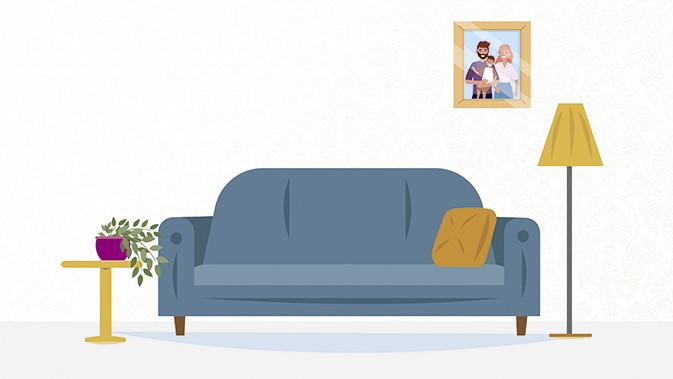This is where I want to grow old, isn’t it?
Our home is one of the main anchor points in life. During the week, we spend half the day there on average and at the weekend significantly longer. Our home is our “castle”, as the saying goes, but what happens if we are forced to vacate it in old age?
Home sweet Home
That is our first thought when we shut the door of our house behind us after a long and tiring day. Once safe within the confines of our own four walls, we are able to relax and go at our own pace. This also has a lot to do with the fact that we are surrounded by familiar things and everything is arranged just how we like it. There is nothing random about anything; it all has meaning. The photos on the wall remind us of family holidays. The desk in the home office is an heirloom from grandad. Over there is the potted plant that has already managed to survive three house moves. Inside the fridge, there is a favourite bottle of white wine left over from a meal with friends. And the Sunday walk to the baker’s has become a much loved part of the weekly routine. Home is bound up with our identity. It is here that we feel safe and secure.
How we became settlers
Around 12,000 years ago, the hunter-gatherers who used to share their food and consume it straight away began to settle as farmers who stored up provisions and switched their focus to owning property. This was a gradual process that took several thousand years. According to current knowledge, this shift originated in the Middle East. Archaeological discoveries reveal that humans first settled in the area known as the Fertile Crescent. They began spending longer in the same place, forming larger groups, cultivating crops and breeding goats and sheep. The fertile soil was an important factor when it came to choosing their living environment. They were very particular about what you might call the “local amenities”, making sure that they had everything they needed for their survival close by. And once people stopped having to roam around, they were able to start accumulating belongings, i.e. individual property. Human sedentism is to be equated with the advent of civilisation with all its positive and negative facets. Owning a permanent refuge has become an established way of life and is part of human evolution.
Housing concepts for the elderly are important
Let us now return to the matter at hand: life within the four walls of our home, which becomes more and more challenging as we get older. Within this context, the state of our health and the supply of our daily needs take on an increasingly important role. Particularly as our mobility decreases, other aspects assume greater significance: the distance to the nearest bus stop, supermarket and doctor’s practice. The space we inhabit and our radius of movement generally become smaller and smaller all the time – until, for some of us, they are restricted to life in a care home. Consequently, the question “How do we want to live in old age?” is of crucial importance. It affects many different aspects of our society’s infrastructure.
Personal belongings are important artefacts linked to a person’s identity.
In this respect, care facilities can create important momentum and go a long way towards ensuring that people still have a sense of “home” in old age. Just a thought while on the subject: within our society, individuals are possibly more “me-focused” than ever before. The working world may be dominated by the concept of “new work” with a view to giving employees as much creative wiggle room as possible, but how does that change life for the oldest within our society? There is unlikely to be one big solution that can act as a silver bullet. However, you are each bound to have your own ideas for concepts that all have one thing in common: providing the elderly with some wiggle room. And that is partly about preparing the ground for our own future, because – ultimately – we are all going to be old one day.
PROconcept
This article is part of our magazine "PROconcept". You are welcome to download it. You can find this article on pages 4-5.
Download ProConcept

